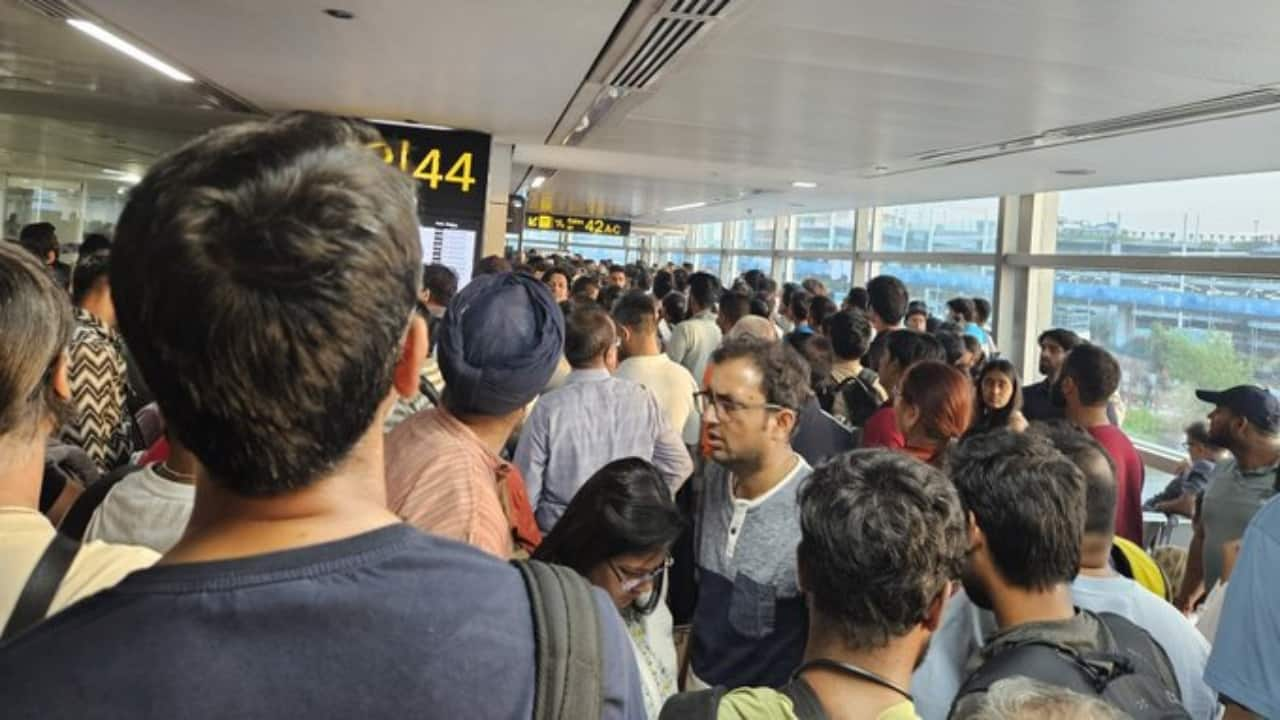 |
|
The Indira Gandhi International (IGI) Airport in Delhi experienced significant disruptions on Saturday, April 12, 2025, following a severe dust storm that swept through the region the previous evening. The adverse weather conditions resulted in the delay of over 350 flights, causing widespread chaos and frustration among passengers. The situation was further exacerbated by ongoing air traffic congestion and the temporary closure of one runway for maintenance, contributing to substantial delays in both departures and arrivals. The average delay for flight departures exceeded 40 minutes, leaving many travelers stranded and anxious about missing connecting flights or reaching their final destinations. Social media platforms were flooded with pictures and videos of long queues and disgruntled passengers waiting for updates, highlighting the severity of the disruption. Airlines, including Air India and IndiGo, issued advisories to inform passengers about potential delays and provide assistance where possible. However, many passengers voiced their dissatisfaction with the handling of the situation, citing inadequate communication, lack of refreshments during extended delays, and overall mismanagement at the airport. The dust storm, which struck Delhi and surrounding areas on Friday evening, caused significant damage, with tree branches falling on roads and power lines, further compounding the challenges faced by airport authorities and airlines. The power outages affected various parts of Delhi-NCR, adding to the general sense of disarray and inconvenience. The incident underscores the vulnerability of air travel to adverse weather conditions and the importance of having robust contingency plans in place to mitigate disruptions and minimize the impact on passengers. Effective communication, proactive measures to address passenger needs, and efficient coordination among airport authorities, airlines, and other stakeholders are crucial for managing such situations effectively. The Delhi airport incident serves as a reminder of the need for continuous improvement in airport infrastructure, air traffic management systems, and emergency response protocols to ensure the smooth and reliable operation of air travel services, even in the face of unexpected challenges. Furthermore, it emphasizes the importance of passenger rights and the obligation of airlines to provide adequate support and compensation to travelers who experience significant delays or cancellations due to factors within their control. The long-term impact of such events on passenger confidence and the reputation of the airport and airlines should not be underestimated, highlighting the need for a proactive and customer-centric approach to crisis management.
The primary cause of the flight delays was the dust storm that hit Delhi the previous evening. This storm reduced visibility significantly, making it unsafe for aircraft to take off or land. The residual impact of the storm continued to affect airport operations on Saturday, leading to air traffic congestion and further delays. The situation was compounded by the fact that only three runways were operational at the time, as one runway was closed for scheduled maintenance. This reduced capacity further exacerbated the congestion and contributed to the long delays experienced by passengers. Airlines were forced to reschedule flights, divert aircraft to other airports, and delay departures, all of which added to the chaos and frustration at the airport. Passengers took to social media to vent their anger and disappointment, sharing pictures and videos of crowded terminals and long queues. Many complained about the lack of communication from airlines and airport authorities, as well as the inadequate provision of refreshments and other amenities during the extended delays. Some passengers even reported being stranded on the tarmac for hours, with little information about when their flights would finally depart. The incident raised questions about the airport's preparedness for handling such events and the effectiveness of its communication strategies in keeping passengers informed and updated. It also highlighted the need for better coordination between airlines, airport authorities, and other stakeholders to ensure a more seamless and efficient response to disruptions caused by adverse weather conditions or other unforeseen circumstances. Furthermore, the incident underscored the importance of investing in airport infrastructure and technology to enhance its resilience and capacity to handle increased traffic volumes and unexpected events. This includes upgrading air traffic control systems, expanding runway capacity, and improving passenger facilities to minimize the impact of disruptions on travelers.
The responses from airlines and airport authorities were varied, with some airlines issuing advisories and attempting to provide updates to passengers, while others were criticized for their lack of communication and support. DIAL (Delhi International Airport Limited), the operator of the airport, issued a statement on X (formerly Twitter) stating that flight operations were improving but that some flights were still impacted. They also assured passengers that on-ground teams and stakeholders were working to minimize inconvenience. However, many passengers felt that these efforts were insufficient and that more could have been done to alleviate their suffering. Some airlines, such as Air India and IndiGo, issued travel advisories informing passengers about potential delays and offering options for rebooking or refunds. However, these advisories were often seen as inadequate by passengers who were already stranded and frustrated. The overall response to the crisis was criticized for being reactive rather than proactive, with many passengers feeling that airlines and airport authorities should have anticipated the potential for disruptions and taken steps to mitigate their impact. There were also calls for greater transparency and accountability, with passengers demanding to know the reasons for the delays and what measures were being taken to resolve the situation. The incident highlighted the importance of having a well-defined crisis management plan in place, as well as a dedicated team responsible for communicating with passengers and providing support during disruptions. It also underscored the need for airlines and airport authorities to prioritize passenger welfare and to treat travelers with respect and empathy, even in challenging circumstances. The long-term reputation of the airport and airlines could be significantly affected by how they respond to such incidents, making it crucial to learn from past mistakes and to continuously improve their customer service and crisis management capabilities.
Source: Chaos at Delhi airport, over 350 flights delayed due to congestion
